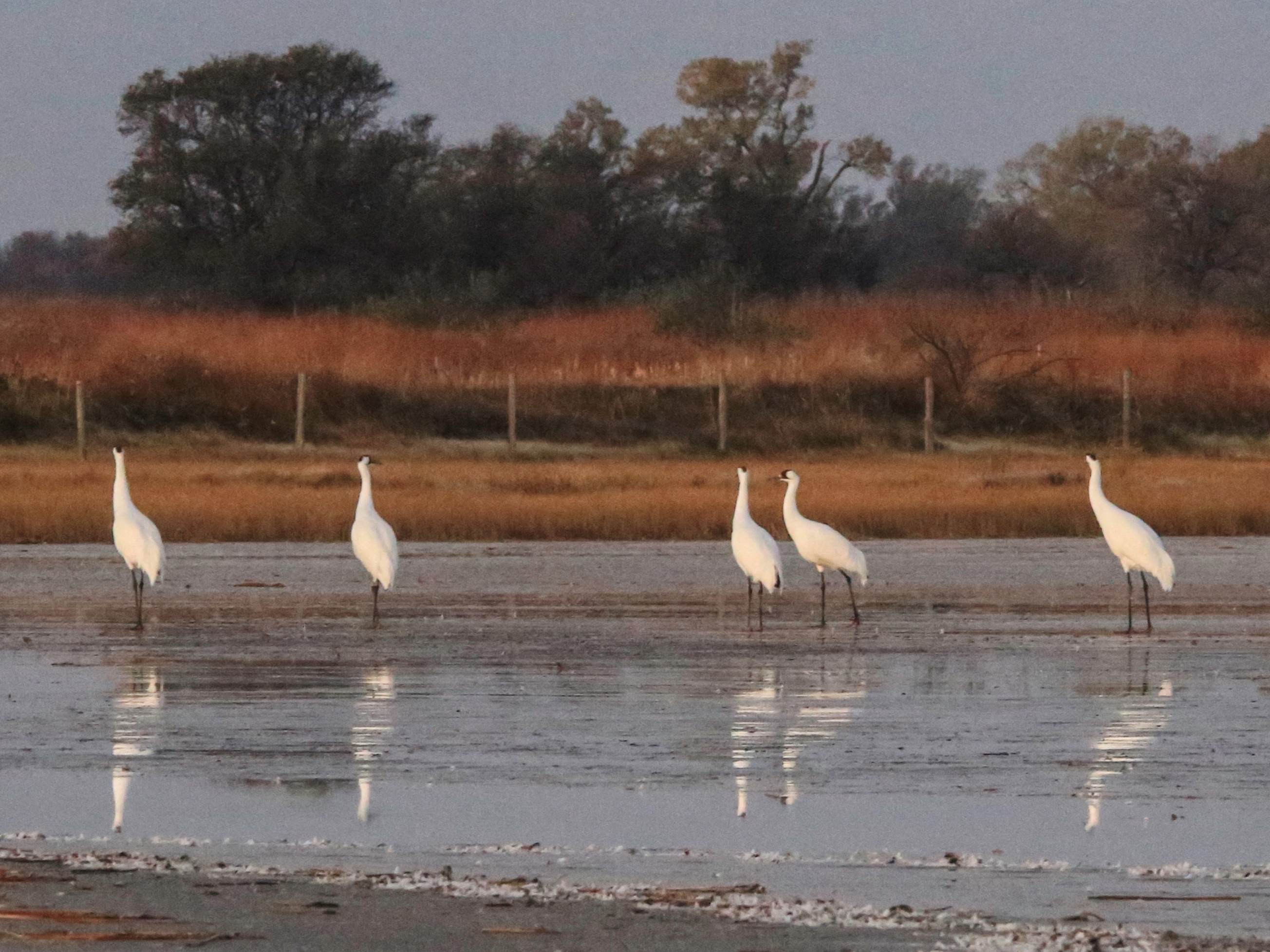Birding Around Johnson County in the Fall
Return to Natural Resource Agent Articles.
Birds migrate twice a year. For Eastern Kansas that means we have an influx of species in October and April as birds travel to and from wintering grounds. Migration allows birds to access additional resources for nesting, food, and harbor from the harsher winter weather. Bird migrations are also a great time to take some binoculars and go look for species we don’t normally have hanging around.
You don’t have to travel far, especially if you have bird feeding stations set up that attract a variety of species. Many places to bird are located right here in Johnson County, since we’re located on the edge of the Central Flyway next to the Mississippi Flyway. Flyways are the ‘highways’ that birds use to migrate.
Also adding to our local birding opportunities are all the public green spaces. Green spaces refer to parks, woodlands, prairies, and other areas that provide wildlife habitat and outdoor opportunities for people. Public parks are great birding areas, especially along the streamways, as they offer birds cover and food sources. An early morning stroll on any of park trails with an ear tuned to birdsong and eyes trained for movement can be very rewarding.
Check out local nature centers, some even offer viewing rooms so you can bird from climate control and easily accessible locations. Botanical gardens and arboretums also can attract birds with their natural spaces.
Many larger lakes/rivers/wetlands offer significant seasonal bird variability. Kaw Point, Wyandotte County Park Lake, Kansas River in Lawrence, and Smithville Lake can be quite good for Bald Eagles, Trumpeter Swans, and Snow Geese in late November and December. Some of these locations also host an Eagle Days event and offer educational presentations. Baker Wetlands just outside Lawrence and KCPL Wetlands within Gardner can offer unique waterfowl and shorebird viewing when the water levels cooperate.

Whooping Cranes at sunrise, Quivira National Wildlife Refuge. Photo Credit Heather Cwach.
Up for a further drive? In Kansas and Missouri we have a few very popular sites that attract unique species or congregate thousands of birds. There is nothing quite like the roar of a million snow geese as they all take flight at once, the whoosh and wingbeat of inbound trumpeter swans along with their distinctive trumpet call, or the chatter of sandhill cranes at dawn and dusk.
Quivira National Wildlife Refuge features a rare inland salt marsh, sand prairie as well as wetlands that attract sandhill cranes, sometimes the Endangered whooping cranes in addition to a variety of waterfowl, shorebirds,songbirds, and raptors. Located near Stafford, KS it’s about four hours from Johnson County. Late October historically is when the largest numbers of Whooping Cranes and Sandhill Cranes pass through.
Cheyenne Bottoms Wildlife Area is the largest inland marsh in the United States and offers waterfowl, shorebird, and crane viewing opportunities. Located near Great Bend, KS it’s about 3 hours and 45 minutes from Johnson County.
Loess Bluffs National Wildlife Refuge is a short ride to the North near Mound City, MO and features fabulous Bald Eagle and snow geese viewing opportunities in November and December, as well as American Pelicans and Trumpeter Swans. Spring brings an impressive assortment of waterfowl, wading shorebirds, herons and Sandhill Cranes as well as a wide variety of songbirds.
Bird status updates are usually posted weekly on each refuge webpage for you to plot your visit and time and target for maximum bird viewing. Social media is also an excellent place to follow the various refuges and see real time population updates. EBird is also an excellent indicator of what is being seen by fellow bird enthusiasts and gives updates on the seasonal bird migration.
No matter where you go to try and find some birds, the following tips will bolster your success.
- Go early. The early birder catches the…bird.
- Be prepared with binoculars or a spotting scope. Dress appropriately if walking in tall grass or woodland areas.
- Move slowly and quietly. Stand in one spot and just listen and observe. You might be surprised what will come to life around you.
- It’s best to make observations (write them down if needed) and look at a guidebook afterwards. This way you’ll get to watch and observe the birds instead of flipping pages. Key characteristics to note for identification are size and shape, color pattern, behavior, and habitat.
- Useful local guidebooks include The Guide Kansas Birds and Birding Hot Spots, by Bob Gress and Pete Janzen, and Birds of Kansas Field Guideand Birds of Missouri Field Guideby Stan TekiBroader guides like The Sibley Guide to Birds or Peterson Field Guide to Birds can also be useful.
- Apps can help identify the birds you see (g., Merlin, Audubon, Sibleys).
- Go with a birding group. Many pairs of eyes spot more than just a few. Your local bird stores or Audubon chapter are great resources for finding timely bird walks.
Most importantly, no matter where you go be sure to enjoy the wonder and entertainment bird watching can bring.
By Juju Wellemeyer, Natural Resources Agent, and Heather Cwach EMN 2021
Additional Resources
Some websites to help you find easily accessible locations around the KC Metro and beyond:
K-State Research and Extension does not endorse products or businesses and all references to any in the above article are supplied as resources for residents.